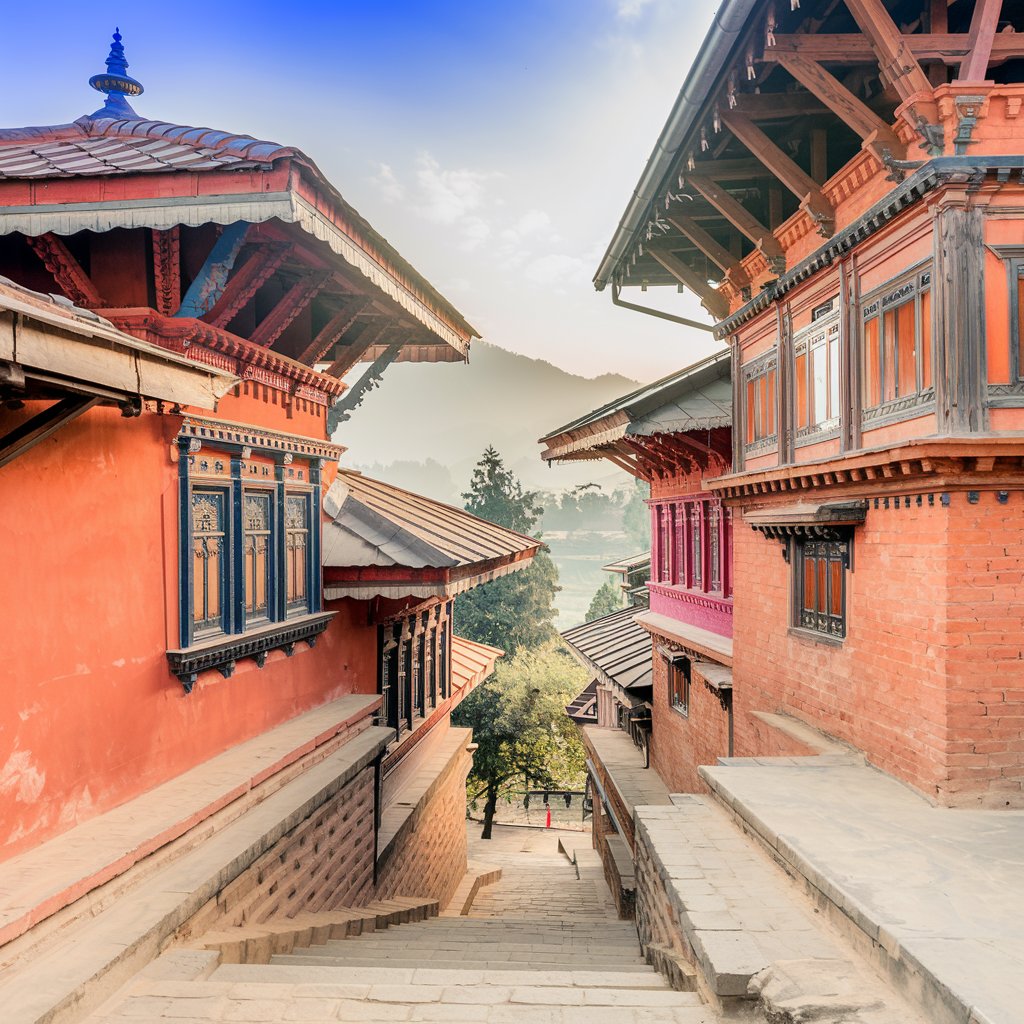Traditional Newari Houses: A Model of Sustainability
The traditional Newari dwellings, predominantly located in the Kathmandu Valley of Nepal, display an exceptional illustration of sustainable building. Grounded in long-standing traditions, these residences not only provide as evidence of the Newar community's abundant cultural legacy but also exemplify environmentally friendly and resource-efficient architectural principles. The traditional Newari dwellings serve as a prime example of sustainability.
1. Use of Local and Natural Materials
Earth-Friendly Materials: Construction of traditional Newari dwellings involves the use of locally sourced materials, including brick, lumber, and clay. The selection of these materials is based on their minimal ecological footprint and appropriateness for the present climatic conditions.
Clay Bricks: Newari architecture utilises bricks crafted from locally obtained clay, a plentiful and sustainable resource. The conventional technique of brick production entails subjecting the bricks to high temperatures in kilns, which, whilst being energy-intensive, utilises local resources and reduces emissions created during transit.
Wood: Timber finds widespread application in structural components such as beams and columns, as well as in ornamental purposes. Utilising locally sourced timber minimises the carbon emissions linked to material transportation, as wood is a renewable resource.
2. Climate-Responsive Design
Thermal Regulation: Newari buildings are meticulously customised to suit the specific climatic conditions of the region. Substantial brick walls and lofty timber ceilings effectively control indoor temperatures by offering insulation against both high and low temperatures. The implementation of this passive design strategy minimises the requirement for artificial heating and cooling.
Ventilation and Light: Traditional architectural designs incorporate well positioned windows and spacious courtyards to optimise the utilisation of natural light and airflow. The primary function of the centre courtyard is to facilitate social activities and enhance air circulation, therefore decreasing the need for artificial lighting and ventilation equipment.
Roof Design: The steep, multi-level roofs of traditional Newari dwellings are specifically engineered to efficiently deal with intense monsoon rainfall. The projecting eaves also offer shelter, therefore assisting in maintaining the lower temperatures of the interiors throughout the scorching summer season.
3. Resource Efficiency
Water Management: A significant number of traditional Newari dwellings are equipped with highly effective water management systems. Conventional wells and rainfall harvesting systems are employed for the purpose of gathering and retaining water for household consumption. Consequently, this diminishes dependence on external water supplies and fosters self-reliance.
Waste Management: Newari dwellings frequently incorporate designated areas for the composting of organic waste. The compost generated can be utilised to enhance soil fertility for gardening, therefore establishing a self-contained system that conserves resources and promotes sustainable agriculture.
Material longevity: The materials used in Newari homes are selected based on their robustness. When adequately maintained, brick and timber have the potential to endure for many decades. Such durability minimises the necessity for frequent maintenance or replacements, therefore preserving resources in the long run.
Community Involvement: The restoration work in Bhaktapur has engaged local craftsmen and artisans extensively knowledgeable in traditional construction techniques. Their specialised knowledge guarantees that the restoration work upholds the original architectural style and preserves the cultural authenticity of the city.

4. Social and Cultural Sustainability
Community Integration: Traditional Newari dwellings are specifically built to promote and facilitate social engagement within the community. In order to strengthen community links and cultural traditions, the central courtyards and common areas promote social cohesion and collaborative activities.
Architectural Heritage: The conservation of traditional architectural styles and construction techniques enhances the cultural sustainability of the Newar community by safeguarding its architectural heritage. Through the preservation of these customs, the community safeguards its historical character and transmits its architectural legacy to succeeding generations.
Adaptability: Traditional Newari dwellings can be adjusted to accommodate different family sizes and requirements. The modular design facilitates sequential expansions or alterations, therefore simplifying the process for families to expand or modify their homes as necessary, without necessitating extensive rebuilding.
5. Modern Adaptations and Innovations
Integrated Modern Technologies: Although firmly grounded in tradition, contemporary Newari homes are progressively integrating sustainable technologies. The integration of solar panels, energy-efficient lighting, and modern waste management systems into conventional designs is augmenting their sustainability.
Green Building Practices: The core concepts of traditional Newari architecture are being incorporated into modern green construction practices. Architectural and construction professionals are deriving inspiration from conventional approaches to create innovative and environmentally-friendly building methods that are in line with contemporary requirements.
Conclusion
Traditional Newari dwellings exemplify the resourcefulness and durability of traditional architectural methods. The dwellings exemplify a paradigm of environmental and resource efficiency by employing local materials, creating climate-responsive construction, and promoting community integration. In light of the increasing global concerns about sustainability and environmental consequences, the concepts of traditional Newari architecture provide significant insights into the development of buildings that are culturally significant and environmentally conscientious. The adoption of these ideas can effectively direct the evolution of future architecture that pays tribute to historical influences while simultaneously tackling present-day obstacles.
Related Blogs
- Build Wise, Build Strong: Why Choose Pillar Construction in Nepal?
- Cost of Building a House in Nepal: Budgeting Guidelines
- The Essence of Nepali Architecture
- The Resilience of Bhaktapur’s Architecture
- Traditional Newari Houses: A Model of Sustainability
- The Unique Charm of Wooden Carvings in Nepali Architecture
- Pagoda-Style Temples: A Glimpse into Spirituality
- Symbolism and Spiritual Significance of pagoda
